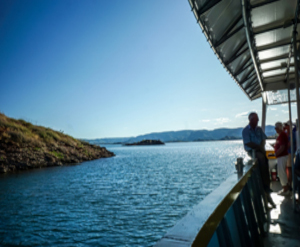Western Australia’s largest … Australia’s second largest man-made reservoir by volume … Lake Argyle, part of Ord River Irrigation Scheme … located about 70km ( 43.5miles) from Kununurra, East Kimberley. Primary inflow is Ord River, together with Bow River, other smaller creeks, converging in this DIWA-listed wetland (Directory of Importance Wetlands in Australia).
Lake is 67 kilometres (42 miles) long, 10 kilometres (6.2 miles) wide, 46,100 square kilometres (17,800 sq miles) catchment area of freshwater; about 3,212 kilometres (1,996 miles) from Perth, Western Australia.
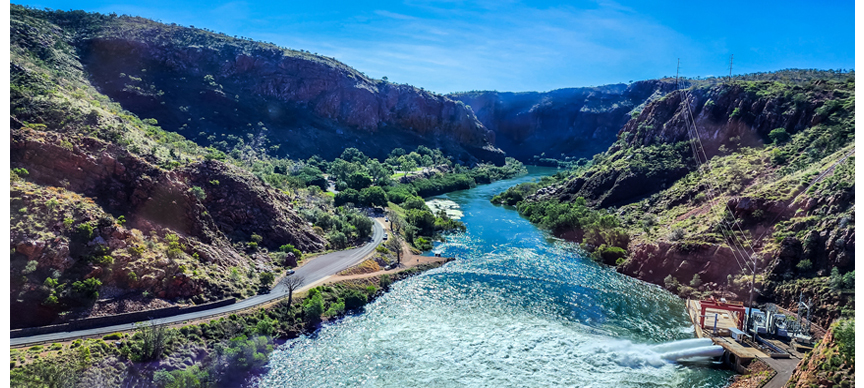
History
Completed in 1971, dam wall is 335 metres (1099 ft) long, 98 metres (322 ft) high – most efficient dam in Australia, in terms of ratio of size of dam wall to amount of water stored. Spillway wall was raised 6 metres higher in 1996, doubling dam’s capacity.
Lake Argyle holds about 10.7 gigalitres (3.801×1011 cu ft) of water at full supply level; usual storage volume being 5,797 gigalitres (2.047×1011 cu ft); covering surface area of 2,072 square kilometres (800 sq. miles).
Second largest reservoir in Australia; submerged Argyle Downs’ higher areas are now permanent islands within Lake Argyle.
Great view of lake on one side, power station on other side.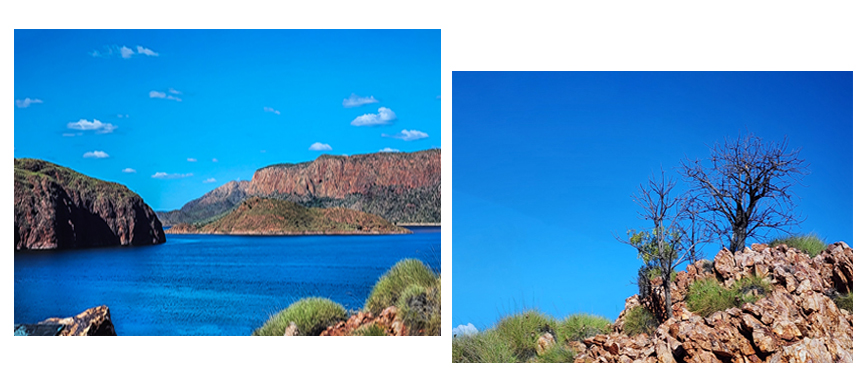
Irrigation
About 150 square kilometres (58 sq miles) of farmland are under this irrigation scheme in East Kimberley – original plan was for dam to irrigate rice crops bound for Chinese market; unfortunately, waterfowl, especially magpie geese ate rice shoots faster than they could be planted – unviable situation for farmers. Other crops are now grown, but Lake Argyle remains Australia’s most under-utilised lake.
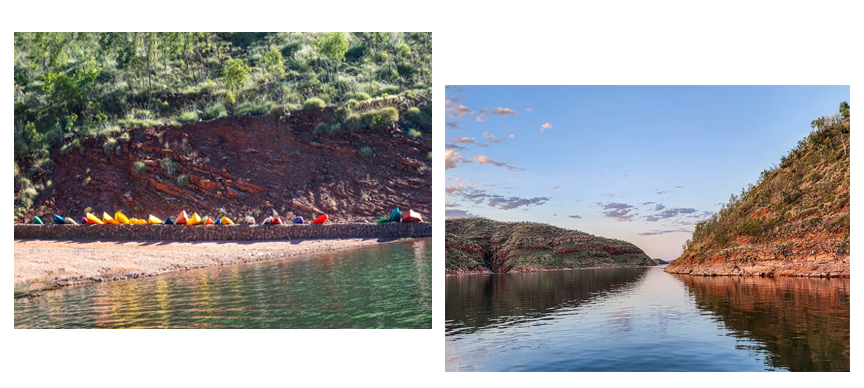
Hydro Electric Power
Hydroelectric power station is located at base of dam, providing power to vast grid of Western Australia; with shaded picnic area, amenities. Scenic lookouts dot along road, top of dam wall as well.
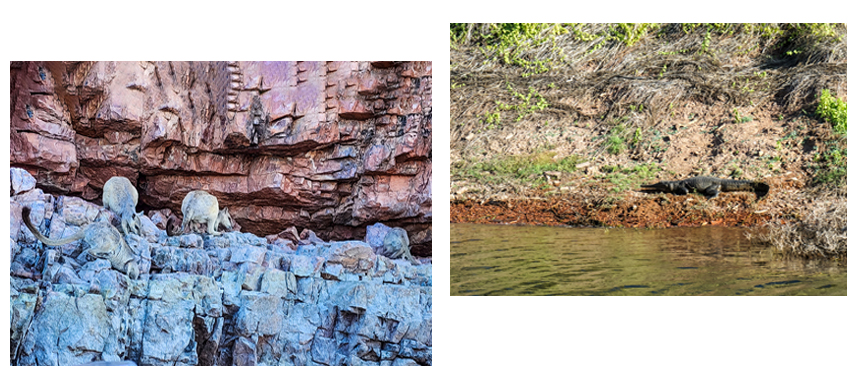
Flora, Fauna, Birds, Wildlife
Nature usually takes its course … within lake is a thriving new eco-system; renowned wetland area (Ramsar Convention).
Home to 26 species native fish – from barramundi, catfish, bony bream to sleepy cod; healthy population of 30,000 freshwater crocodiles, occasional saltwater croc and overbearing cane toads.
Surrounding mudflats, grasslands supports about 150,000 waterbirds, wader species, Australian bustards (large ground-dwelling birds), geese, duck, stork varieties, larger-bodied, mid-bodied, small-bodied birds – pelicans, black swans, egret, spoonbills, osprey, wedge-tail eagle; parrot, kookaburra, barking owl; pigeon, dove, sandpiper, budgies.
There are also rock kangaroos living amongst rocky outcrops in lake – they are quite used to tourists making a visit, now and again !
Together with wildlife, unfortunately, are invasive weeds, cane toads, free-range cattle, feral ungulates (large-hoofed mammals like sheep, pigs, horses) which may cause over-grazing in shallows of lake. Constant surveillance is needed to ensure balance and sustainability.
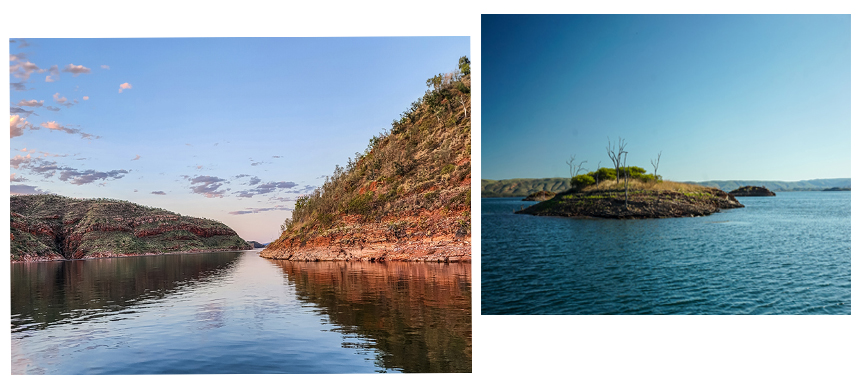
Discovery Parks, Tourist Activities
Great scenery, peaceful isolation make Lake Argyle an idyllic destination for local and overseas tourists. Range of accommodation to suit all budgets is found at Discovery Park Lake Argyle.
Lake Argyle cruises – self-driven watercraft or guided cruises offers easy, relaxed, informative outing for the day, sipping bubbly, beers or soft drinks with nibblies … watching amazing sunset over horizon …
Definitely relaxing break !
Don’t forget hiking, 4WD trips, or fly over World Heritage listed Bungle Bungle Range for more adventures – time permitting !
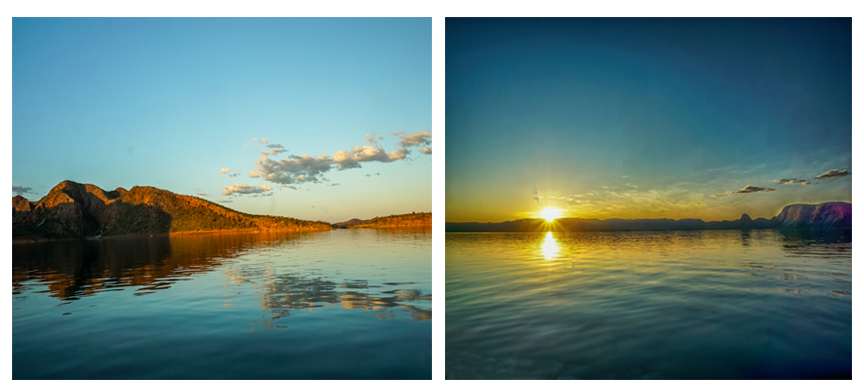
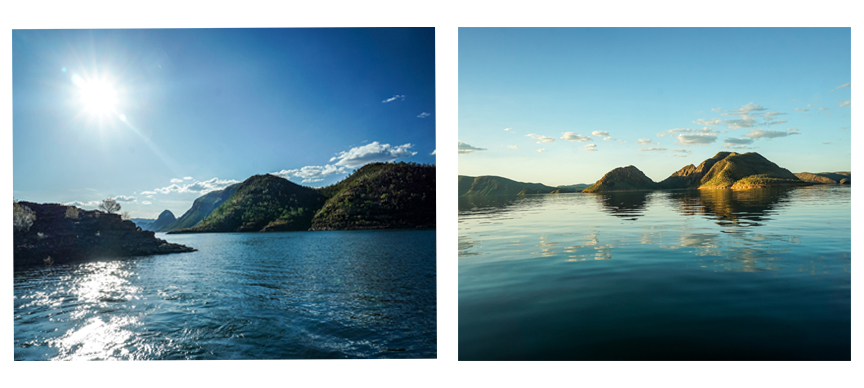
Conclusion
Spend weekend or a week in the Kimberley but spend time at Lake Argyle – appreciate man-made lake now nurtured by nature, supporting new eco-system, wetlands, mudflats, rocky outcrops, inhabited by wildlife large and small, harmless or deadly … all coexisting in same area.
Truly memorable spot !
